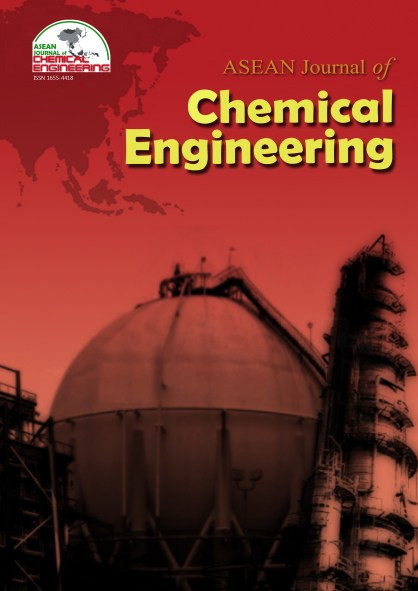A Comparison of Carbon Molecular Sieve (CMS) Membranes with Polymer Blend CMS Membranes for Gas Permeation Applications
Abstrak
In this work, polyetherimide (PEI) was used as a main precursor to prepare carbon molecular sieve (CMS) membranes coated on a porous α-alumina disk via inert pyrolysis process. The PEI precursor was modified by blending with poly(ethylene glycol) (PEG) and its effect on the gas transport property of carbon membrane pyrolyzed at 873K was examined. The coating solution was prepared by PEI diluted in N-methylpyrrolidone (NMP) and coated onto support by dip-coating technique. Uniform CMS membranes were obtained by repeated dip-coating and pyrolysis of PEI and PEI/PEG. The structure and the single gas permeation properties of PEI and PEI/PEG CMS membrane were investigated.The thermal stability of CMS membranes prepared was determined by thermal gravimetric analysis (TGA). Elemental analysis, scanning electron microscopy (SEM), and Attenuated Total Reflectance Infrared (ATR-IR) Spectroscopy were employed to characterize the resulting membranes. The gas permeation of the CMS membranes was tested using three gases: methane, carbon dioxide, and oxygen and performed at 298K. The best performance was obtained by using PEI/PEG CMS membrane, whereby CO2 permeability should be 400.44x10-10 mol.m-2.s-1.Pa-1.
Referensi
2. Filip, D., and Macocinschi, D. (2002). Thermogravimetric analysis of polyurethane-polysulfone blends,Polym. Int., 51, 699.
3. Fuertes, A.B., and Centeno, T.A. (1998). Carbon molecular sieve membranes from polyetherimide,Microporous Mesoporous Mater., 26, 23.
4. Han, S.H., Kim, G.W., Jung, C.H., and Lee, Y.M. (2008). Control of pore characteristics in carbon molecular sieve membranes (CMSM) using organic/inorganic hybrid materials,Desalination, 233, 88.
5. Kim, Y.K., Park, H.B., and Lee, Y.M. (2004). Carbon molecular sieve membranes derived from thermally labile polymer containing blend polymers and their gas separation properties,J. Membr. Sci., 243, 9.
6. Laszlo, K., Bota, A., and Nagy, L.G. (2000). Comparative adsorption study on carbons from polymer precursors,Carbon, 38, 1965.
7. Lee, H.J., Suda, H., and Haraya, K. (2007). Preparation of carbon membranes derived from polymer blends in the presence of a thermally labile polymer,Sep. Sci. Technol., 42, 59.
8. Okui, T., Saito, Y., Okubo, T., and Sadakata, M. (1995). Gas permeation of porous organic/inorganic hybrid membranes,J. Sol-Gel Sci. Technol., 5, 127.
9. Ozaki, J., Endo, N., Ohizumi, W., Igarashi, K., Nakahara, M., and Oya, A. (1997). Novel preparation method for the production of mesoporous carbon fiber from a polymer blend,Carbon, 35, 1031.
10. Rao, P.S., Wey, M.Y., Tseng, H.H., Kumar, I.A., and Weng, T.H. (2008). A comparison of carbon/nanotube molecular sieve membranes with polymer blend carbon molecular sieve membranes for the gas permeation application,Microporous Mesoporous Mater., 113, 499.
11. Salleh, W.N.W., Ismail, A.F., Matsuura, T., and Abdullah, M.S. (2011). Precursor selection and process conditions in the preparation of carbon membrane for gas separation: a review,Sep. Purif. Rev., 40, 261.
12. Saufi, S.M., and Ismail, A.F. (2004). Fabrication of carbon membranes for gas separation – a review,Carbon, 42, 241.
13. Wang, K., Suda, H., and Haraya, K. (2003). The characterization of CO2 permeation in a CMSM derived from polyimide,Sep. Purif. Technol., 31, 61.
14. Xing, R., and Ho, W.S.W. (2009). Synthesis and characterization of crosslinked polyvinylalcohol/polyethyleneglycol blend membranes for CO2/CH4 separation,J. Taiwan Ins. Chem. Eng., 40, 654.
15. Zhang, X., Hu, H., Zhu, Y., and Zhu, S. (2007). Carbon molecular sieve membranes derived from phenol formaldehyde novolac resin blended with poly(ethylene glycol),J.Membr. Sci., 289, 86.


